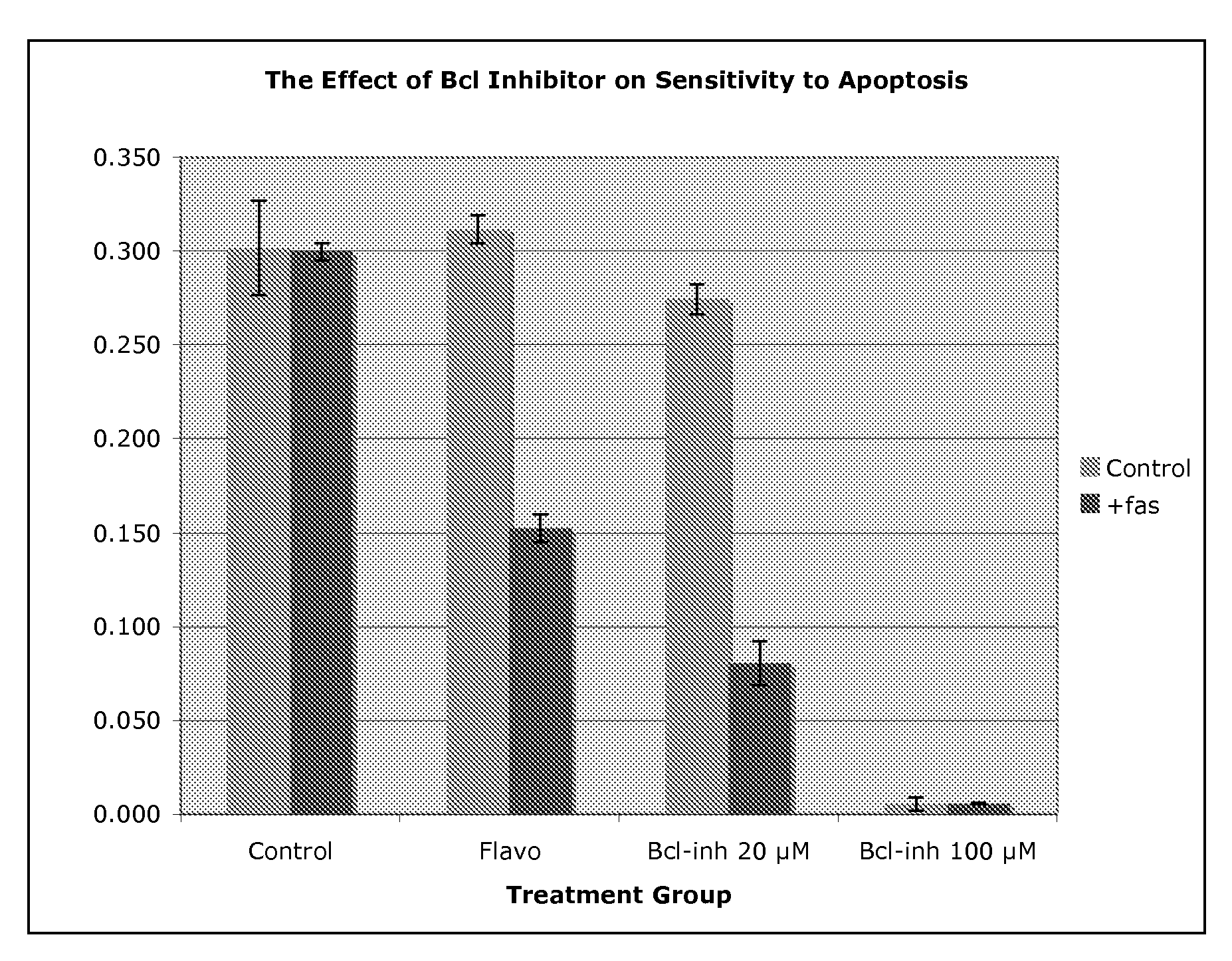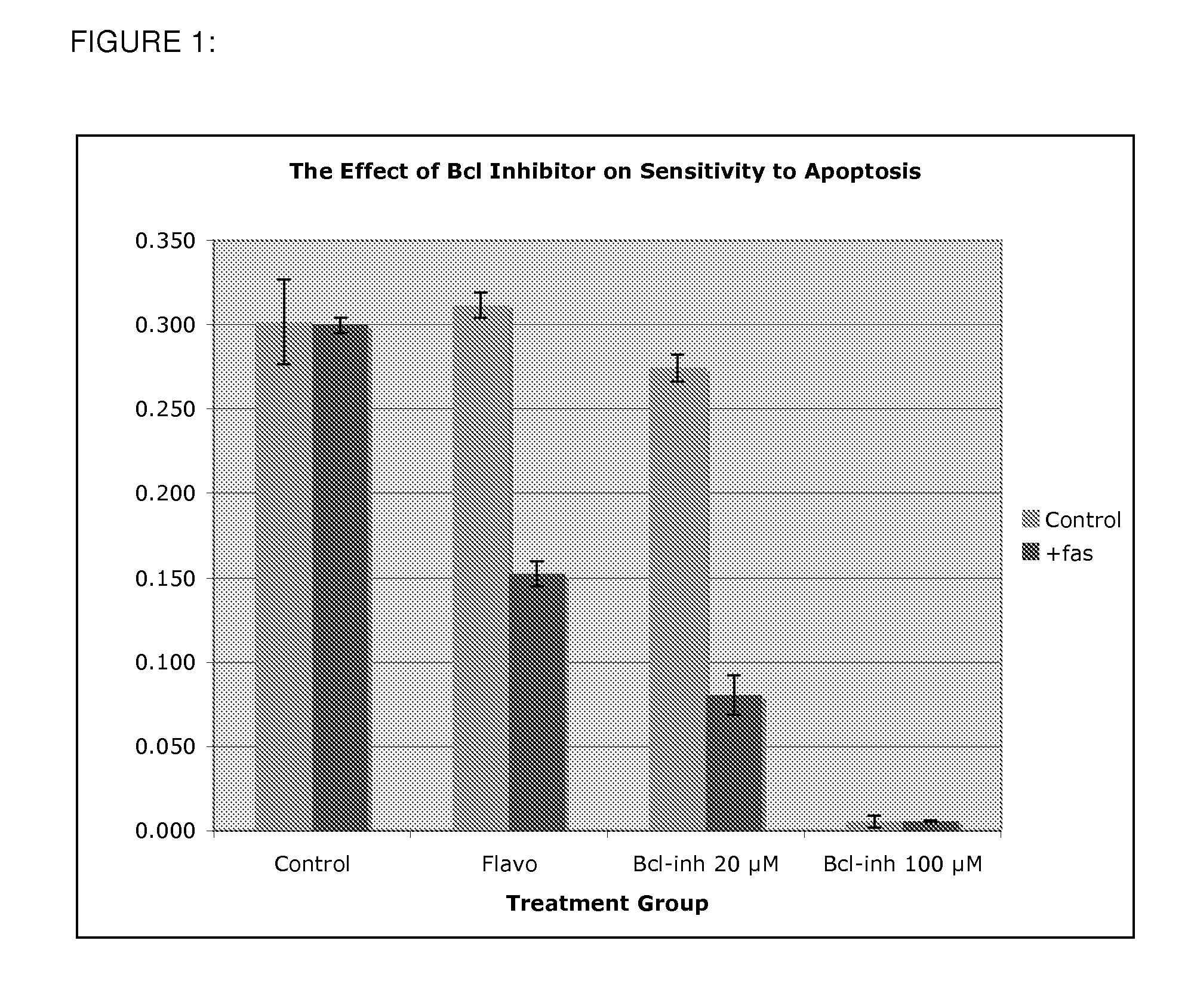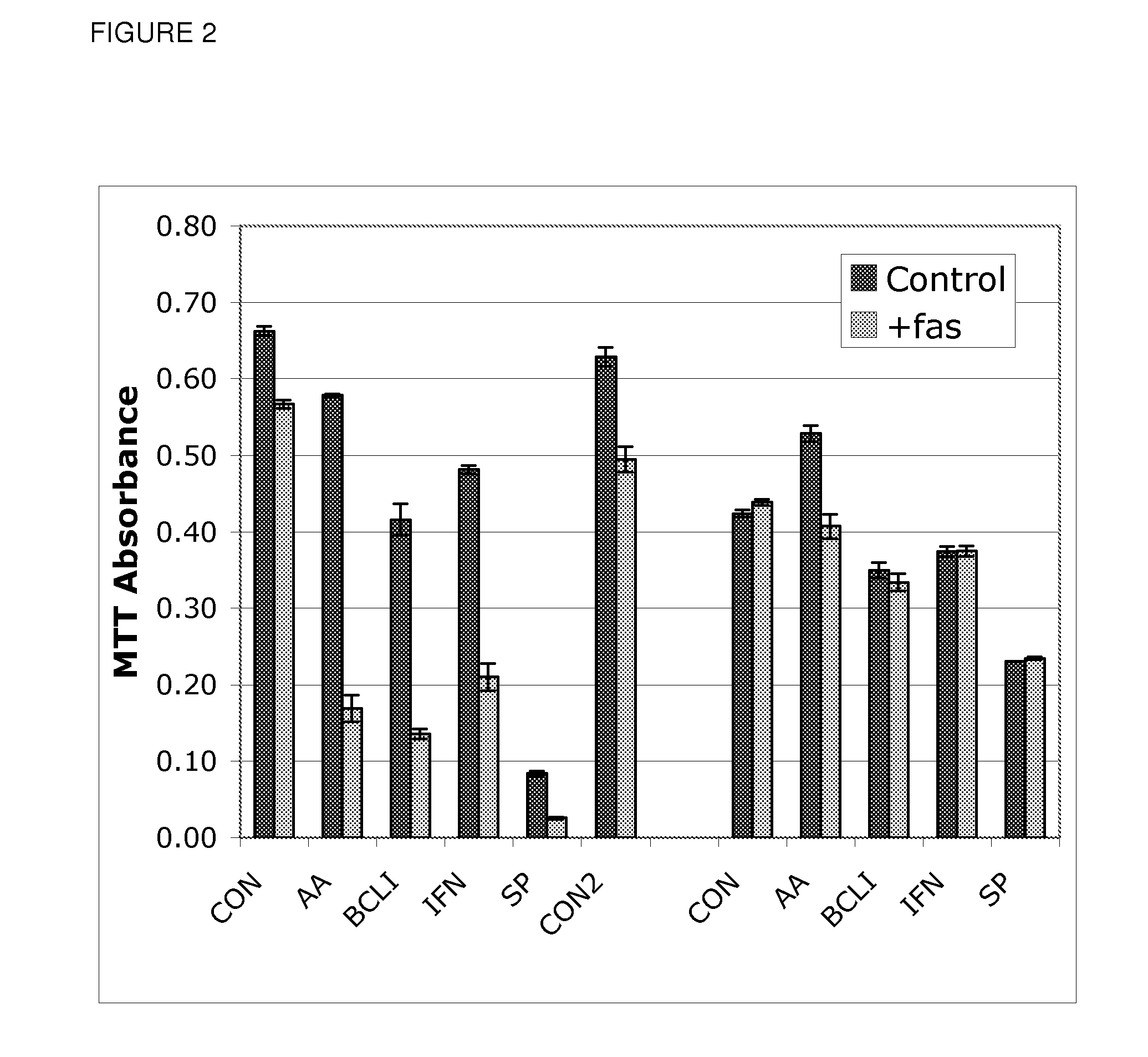Use of Bcl inhibitors For The Prevention Of Fibroproliferative Reclosure Of Dilated Blood Vessels And Other Iatrogenic Fibroproliferative Disorders
a technology of iatrogenic fibroproliferative disorders and bcl inhibitors, which is applied in the direction of blood vessels, prosthesis, nitro compound active ingredients, etc., can solve the problems of arteries typically becoming blocked, excessive matrix production, and contracting wounds
- Summary
- Abstract
- Description
- Claims
- Application Information
AI Technical Summary
Benefits of technology
Problems solved by technology
Method used
Image
Examples
example 1
[0068]Using the cell line R1, it was observed that pretreatment with BCL-inhibitor (BCLI) at 20 μM had little or no effect upon cell survival in the absence of the activating antibody to fas ligation (CH11, FIG. 1). However, in the presence of fas, the cells pretreated with BCLI underwent a high degree of apoptosis (70% cell death). It is important to reiterate that at this dose (20 μM), BCLI has little or no adverse effect on cell number or metabolism, as demonstrated in the control group which contains the drug, but not a fas ligating agent. Thus, the drug is neither toxic nor capable of inducing apoptosis alone at this concentration.
[0069]This compares favorably with a known sensitizing agent, flavopiridol, which has likewise been shown to inhibit restenosis in animal models [5]. At a higher concentration of BCLI (100 μM), there was a substantial effect on cell survival even in the absence of fas ligation. This suggests that at relatively low doses BCLI sensitizes cell to apoptos...
example 2
[0071]In addition to the BCL-inhibitor, this sensitizing effect was also observed with AA. As above, a human atherosclerosis-derived cell line with known resistance to fas ligation was used for study. In this case, the cell line was stably infected with a retrovirus expressing either an irrelevant marker gene (green fluorescent protein, GFP) or the marker gene and Bcl-XI. In the GFP-only expressing cell line (R1GFP), fas ligation (50 ng / ml CH11) in low serum (1% FBS) led to only 15% cell death (85% survival) (see FIG. 2). However, 24 hour pretreatment with AA3 (20 μg / ml) had only a small effect on cell survival in the absence of fas, but caused marked apoptosis in the presence of fas (70% apoptosis). BCLI (20 μM) had a similar effect, though caused slightly more apoptosis alone. A comparable effect was observed with interferon-gamma (50 U / ml), which is a known sensitizing agent [6]. A MAPkinase inhibitor SP600125 (SP), had a more general inhibitory effect at the selected concentrati...
example 3
[0074]In a format similar to the procedures above, 2 other potential inhibitors were tested: antimycin A3 and gossypol. Antimycin A3 (2-methoxyantimycin A3) is an analog of antimycin which inhibits Bcl-2 and Bcl-XI by binding to their hydrophobic groove. AA3, unlike antimycin A, does not cause general mitochondrial toxicity by inhibiting mitochondrial electron transport. Gossypol is a potential male infertility agent that also counteracts the activity of Bcl family members. As shown in FIG. 3, AA3 is effective at increasing sensitivity to apoptosis from 20% to 80% death at both 10 and 20 μg / ml. At higher concentrations, AA3 induced death even in the absence of fas ligation. Gossypol showed a narrow window in which it induced any sensitivity to fas ligation: at 2.5 μM it reduced survival in the presence of fas from 80% to 50%, though it also had a significant fas-independent effect on survival at 2.5-5 μM.
[0075]FIG. 3 depicts the effect of 2-methoxy-antimycin A3 (AA3) and gossypol on...
PUM
| Property | Measurement | Unit |
|---|---|---|
| Electrical resistance | aaaaa | aaaaa |
| Adhesion strength | aaaaa | aaaaa |
Abstract
Description
Claims
Application Information
 Login to View More
Login to View More - R&D
- Intellectual Property
- Life Sciences
- Materials
- Tech Scout
- Unparalleled Data Quality
- Higher Quality Content
- 60% Fewer Hallucinations
Browse by: Latest US Patents, China's latest patents, Technical Efficacy Thesaurus, Application Domain, Technology Topic, Popular Technical Reports.
© 2025 PatSnap. All rights reserved.Legal|Privacy policy|Modern Slavery Act Transparency Statement|Sitemap|About US| Contact US: help@patsnap.com



